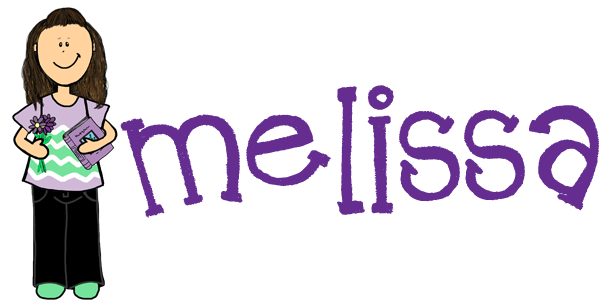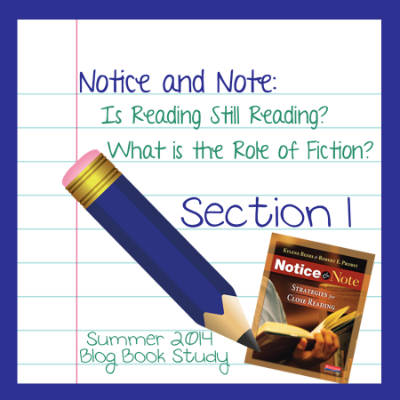Welcome to the first post in this summer blog book study on Notice and Note by Kylene Beers and Robert E. Probst. I had been eyeing this book for a bit and wondering how helpful it would be among the sea of many other professional development books. I asked some fellow bloggers for ideas on good summer book study books and this one came up. So, I decided to give it a go. I'm so very glad I did! I'm about half way through, and LOVE it! I hope you'll join us this summer and read along. Please make comments or link up your own blog posts to share your ideas on each section. Be sure to stop by our information page here to get the details of this book study and a calendar of posts.
Post 1 will cover Chapter 1 and Chapter 2 (through page 19). This first section of the book reviews the questions the authors asked as they were seeking information on what is helpful to students as readers and consider how to change their teaching based on current theories and practices.
Question 1: Is Reading Still Reading? As technology continues to become more integrated into our way of life, we have to re-examine what we consider to be reading. In tandem with thinking about what we consider to be reading, we have to consider the way we are reading and whether we are adequately preparing students to access and understand these various texts. The skills it takes for a student to navigate and read a website, blog, text, etc. are very different than a book which differs from a newspaper or magazine as well.
At the end of each chapter, the authors offer some questions to consider and discuss with colleagues... that's all of you. I do think the nature of reading is changing and as teachers, we have to be aware of that and willing to change what texts we teach and how we teach students to access and comprehend them. I don't think reading will ever become obsolete, I do think the way we read will change and evolve.
Question 2: What is the Role of Fiction? There is such a push lately for students to read more and more non-fiction. So what place does fiction have in our classrooms now? I love this quote from Notice and Note: "Indeed, it is imaginative literature that offers readers a chance to think about the human issues that concern us all: love, hate, hope, fear and all the other emotions, problems, situations, and experiences of living." How many of us feel that in addition to the content areas, we have also become teachers of societal norms, manners, behaviors, etc.? I know that I have felt this way, and feel increasingly so with each school year that passes. Fiction is a perfect way to teach literacy and integrate social skills. The authors also write: "Living for a time in the book's imaginary world may make us better able to live in our real world." What a wonderfully profound statement to consider!
As the summer continues, I hope to share how I structure and run my reading time in my classroom. I've had several bloggers ask about how to effectively run guided reading, literature circles and reading lessons from a basal in the time they have. With the help of a fabulous colleague, I have a solution. One of the questions asked at the end of section 2 is how to strike a balance. I hope that my posts about reading in my classroom will help to answer that question as I feel it very important to find that balance.
What are your thoughts and reactions to these first two sections of Notice and Note? Add the link to your blog post to the linky below or share your thoughts in the comments of this post.



















I am very excited to be reading and posting along with y'all! Thanks for getting this together. I love professional reading with other teachers.
ReplyDelete✰Becca
Simply 2nd Resources
I love this book! I read it about three months ago while on disability recovering from hip surgery. Immediately upon returning to my classroom the last day of March, I did the first signpost lesson. Students LOVED it. After introducing the "Contrasts & Contradictions" signpost, students were always sharing spots in their own books in which they were applying this Notice & Note technique. The literary conversations that ensued were amazing. Great book for a professional discussion! I'm rereading it again along with you guys!
ReplyDeleteFinally out of school and trying to play catch up. Thanks for the opportunity to link up. I LOVE this book and worry about the push to only teach informational text. Your post was excellent!
ReplyDeleteSebrina
Burke's Special Kids
Is it too late to join this? I just got out of school, and I'm ready to begin reading my pile of professional books. If it's too late to start, no biggie! I still plan on reading it regardless!
ReplyDeleteNot at all! You're welcome to read through the posts that have already been done, we'll be posting through mid-July. If you have a blog, you can link up through the end of July. See the button at the top right of this page to be directed to the calendar and details of this book study.
Delete